摘要:碧海蓝天、细软沙滩,海底潜水、海上冲浪能够在夏天去海里玩一玩实属人生一大美事。然而你以为海水很干净吗?或许正在吃着塑料垃圾......据了解,海洋垃圾中80%是塑料制品,它们不仅污染环境其中的有害物质还会被海洋生物吞下,继而流会餐桌,进入人类食物链。说起海洋垃圾,各种新闻和图片看的触目惊心肚子里塞满塑料袋而死亡的泰国鲸鱼被塑料袋缠住嘴巴而无法进食的海龟
碧海蓝天、细软沙滩,海底潜水、海上冲浪能够在夏天去海里玩一玩实属人生一大美事。然而你以为海水很干净吗?
或许正在吃着塑料垃圾......
据了解,海洋垃圾中80%是塑料制品,它们不仅污染环境其中的有害物质还会被海洋生物吞下,继而流会餐桌,进入人类食物链。说起海洋垃圾,各种新闻和图片看的触目惊心肚子里塞满塑料袋而死亡的泰国鲸鱼被塑料袋缠住嘴巴而无法进食的海龟

加勒比海罗阿坦岛附近,潜水胜地变“垃圾之海”
太平洋垃圾带面积,超法德西三国面积总和

为什么海洋垃圾会被我们吃进体内?
美国国家地理频道曾用3D动画演示并解释。以欧洲为例,一个欧洲人平均每年使用并扔掉超过100公斤的塑料制品,这些塑料垃圾一部分被填埋,一部分被扔进海洋。如今,太平洋里漂着超过一亿吨的塑料垃圾。
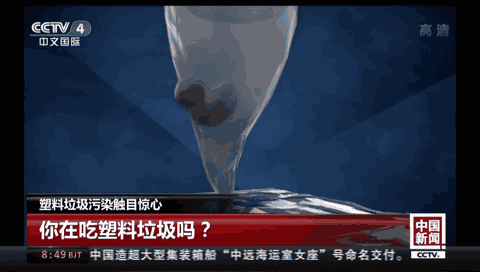
塑料无法自行降解,存在时间可长达500年,长期下来会分解为塑料微粒。其吸收水中的工业或农业毒素,很多海洋生物把它们误当成食物吃进去。吃了“有毒塑料”的海洋生物一部分慢慢死去,一部分则成了人们餐桌上的食物。
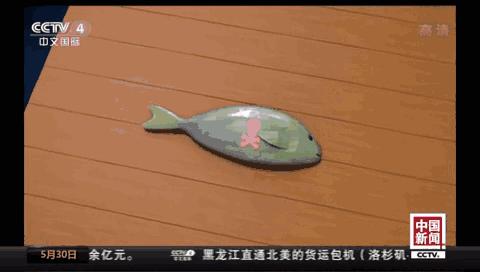
如何解决塑料垃圾?
那么现在有没有办法可以解决塑料垃圾呢?一种办法是回收,另一种办法是用生物学。相关研究人员以后在寻找能够消化塑料的生物,幸运的是,斯坦福大学Anja Brandon和Craig Criddle发现面包虫肠道中的细菌可以更快地分解聚合物。
Other researchers had already found that mealworms can digest a particular plastic called polystyrene. Ms. Brandon and Dr. Criddle wondered whether polystyrene was uniquely palatable, or whether the bacteria in the worms’ guts might be able to eat other sorts of plastic, too. To check, they turned to polyethylene, which is both more common than polystyrene and very different in chemical terms. If the worms found it nutritious as well, that would suggest their tastes might be usefully wide-ranging.
其他研究人员已经发现面包虫能够消化一种特定的名为聚苯乙烯的塑料。Brandon女士和Criddle博士想知道聚苯乙烯对这种细菌来说是特别美味,还是因为虫子肠胃里的细菌也可能吃掉其他类型的塑料。为了验证,他们转向研究聚乙烯塑料—比聚苯乙烯更加常见而且在化学中(两者)非常不同。假如面包虫觉得聚乙烯也有营养,那就表示它们的爱好可能非常广泛。
Brandon女士和Criddle博士针对这个问题进行了一系列的研究,通过对面包虫进行分组,喂食不同的食物,以此证实此前猜想。
the researchers divided their worms into groups. Some were given 1.8 grams of either polyethylene or polystyrene. Some were given both. Others had their plastic meals supplemented with wheat bran. (Wheat bran had been found to increase the rate at which mealworms could digest polystyrene). A control group of worms was fed only bran.
面包虫被分成几组。有些喂了1.8克的聚苯乙烯或者聚乙烯。有些两者都喂了。其他一些还补充了麦麸。(已经有研究发现麦麸可以提高面包虫消化聚苯乙烯的速度)。控制组的面包虫只喂麦麸。
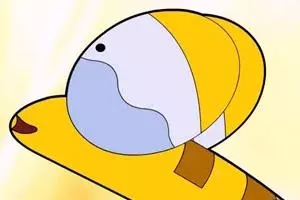
More than 90% of the worms survived the 32-day experiment. Those fed only polyethylene found it very agreeable, polishing off 0.87 of their 1.8-gram helping. That was significantly more than the worms eating polystyrene, who managed just 0.57 grams of the stuff. Best of all were the worms that were given bran with their plastic. They chewed through 1.1 grams of polyethylene and 0.98 grams of polystyrene.
超过90%的面包虫在32天的实验中活下来。那些只吃聚乙烯的虫子觉得(聚乙烯)非常可口,1.8克食物中吃完了0.87克。这比只喂聚苯乙烯的虫子—只吃了0.57克—多出很多。表现的是在塑料中添加了麦麸的那些虫子。它们分别吃掉了聚乙烯的1.1克,聚苯乙烯的0.98克。
Nor were the insects merely chewing up the plastics and then passing them in their faeces. Instead, chemical reactions in their guts were converting them into carbon dioxide. The conversion rate was low at first, but by the end of the experiment the worms fed polyethylene were converting 50% of it into gas and those fed polystyrene were converting 45%.
这些虫子也不仅仅只吃塑料再排泄出去。而是在他们的肠子中进行的化学反应把塑料变为二氧化碳。这种转换率起初很低,但是在实验结尾,喂食聚乙烯的虫子能将50%转化为气体,喂食聚苯乙烯的转化率为45%。
实验结果证明,面包虫有可能可以消化很多种的塑料,不仅如此,研究人员还认为,它们肠内菌群的多变特性能使它们能够‘专攻’(更快地消化)某一种特定的塑料。
Ms. Brandon and Dr. Criddle theorised that the bacterial ecosystems inside the insects’ guts were changing to fit their unusual diets. They dissected the worms at the end of the experiment and compared the gut fauna of those that had been eating plastics with the fauna found in the control group. They found big differences, with several types of bacteria being more common in the guts of mealworms that had been fed plastic.
Brandon女士以及Criddle博士认为虫子内脏中细菌的生态系统会适应它们独特的饮食。他们两人在实验的最后解剖了这些虫子并将喂食塑料的肠内动物群与控制组的动物群进行了对比,发现差异巨大—在被喂食塑料的面包虫当中有几种类型的细菌更为常见。
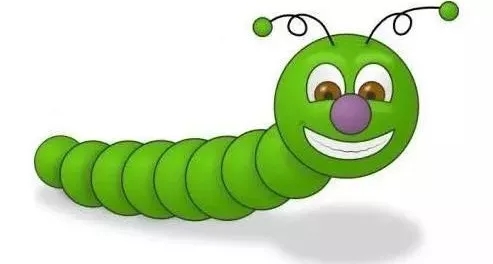
The researchers argue that not only are mealworms probably capable of digesting a wide range of plastics, but that the protean nature of their gut bacteria should allow them to specialise in a particular sort relatively quickly. A small population of a thousand worms, they reckon, might manage to devour 0.32 grams of polyethylene or 0.28 grams of polystyrene in a day. That is still not lightning fast. But it is quicker than waiting for it to break down in a landfill.
研究人员们认为面包虫不仅有可能可以消化很多种的塑料,而且它们肠内菌群的多变特性还能使它们能够‘专攻’(更快地消化)某一种特定的塑料。他们估计一千只虫子当中的一小部分一天就有可能吃掉0.32g的聚乙烯或者0.28g的聚苯乙烯。那当然还不算闪电速度。不过总比等着在垃圾堆里分解的速度快一些。
这一研究或许会为海洋污染带来福音其实为保护海洋环境而努力的,人不仅仅是科学家们有个二十多岁的年轻人就在做着这件事他叫Boyan Slat是海洋清洁公司的创始人兼CEO2011年,16岁的Slat去了一趟希腊却看到希腊海域随处可见的塑料垃圾,海面上漂浮着大量的塑料瓶和塑料袋。
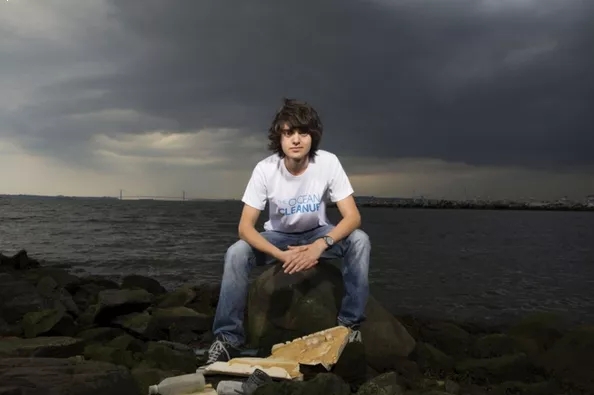
“如果没有人为的干预,它们不会自动降解,还会继续在海洋中漂浮成千上万年。所以我认为,最应该做的,我正在做的,就是走到室外,航行到海洋上,把这些一直漂浮在海洋上的塑料垃圾都清理干净。”
凭着一腔热血,这位少年一头扎进海洋塑料垃圾的研究中。如今,他发明的依靠洋流自动收集海洋塑料垃圾的“海洋清洁序列”系统正在北海和太平洋日以继日地运转收集成千上万吨塑料垃圾,其实我们都可以成为“地球卫士”的一员就像Slat说的:走出去,把垃圾清理干希望这个夏天当你去海滩玩时看到塑料垃圾能够随手捡起来扔掉期待见到更干净,更美丽的碧海蓝天。
本文作者简介:

王少娟
上海新航道雅思主讲,上海外国语大学教育技术学硕士。对综合英语的阅读教学有深入的研究,教授了数百名学生均取得了优异的英语成绩。讲解细致、逻辑清晰、课堂活跃,丰富的教学经验能帮助学生在学习中和练习中能够更有效的提高英语能力。
相关推荐:
Passenger drones——Free as a bird
Agricultural chemicals——For better or worse
免费领取最新剑桥雅思、TPO、SAT真题、百人留学备考群,名师答疑,助教监督,分享最新资讯,领取独家资料。
方法1:扫码添加新航道老师

微信号:shnc_2018
方法2:留下表单信息,老师会及时与您联系
免责声明
1、如转载本网原创文章,请表明出处;
2、本网转载媒体稿件旨在传播更多有益信息,并不代表同意该观点,本网不承担稿件侵权行为的连带责任;
3、如本网转载稿、资料分享涉及版权等问题,请作者见稿后速与新航道联系(电话:021-64380066),我们会第一时间删除。
客服热线电话:4008-125-888
总部:北京新航道教育文化发展有限责任公司
总部地址:北京市海淀区中关村大街28-1号6层601 集团客服电话:400-097-9266
Copyright © www.xhd.cn All Rights Reserved 京ICP备05069206
ICP认证:京ICP备05069206号-5
![]() 京公网安备11010802021513号
京公网安备11010802021513号